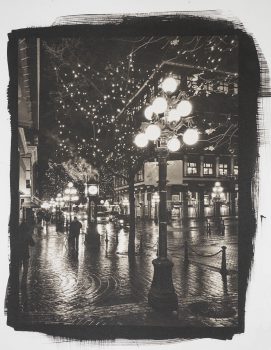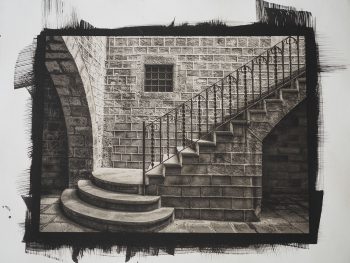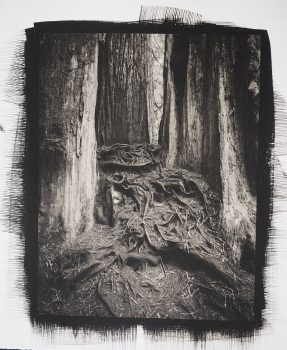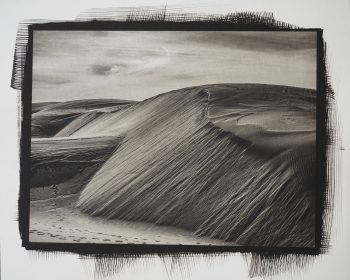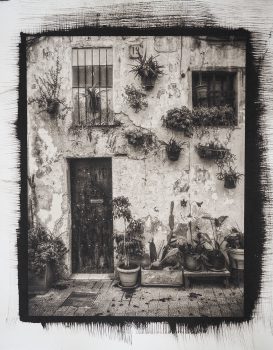Platinum Print Images
The platinum print process is based on the characteristics of light-sensitive iron salts, which react with platinum salts to form platinum metal. A sheet of paper is coated with a solution of these salts to make it sensitive to light. Once dry, the sensitized paper is exposed to light through a negative, developed in a chemical solution, cleared, and washed. The print’s hue may range from charcoal gray to sepia depending on the chemical properties of the sensitizer and developer. Various image hues can also be achieved by adjusting the moisture content of the sensitized paper and/or the temperature at which a print is developed. Further chemical additions to the sensitizer and/or developer provide seemingly endless options for fine-tuning the appearance of the photograph.

